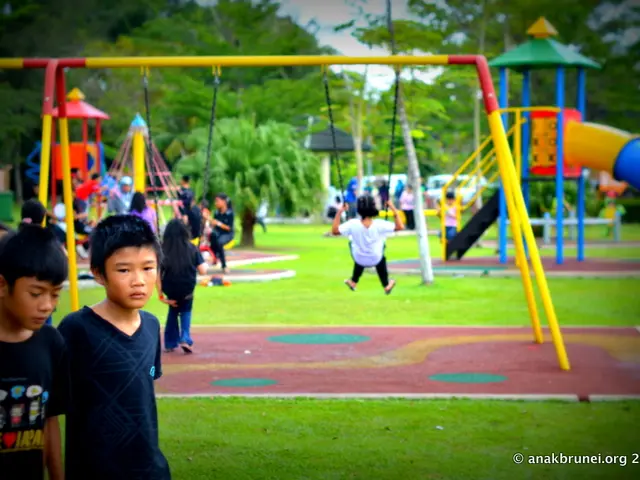Benefits of Being an Outgoing Person: Highlights of Six Primary Advantages
In the realm of human personality, three distinct types often capture our attention: extroverts, introverts, and ambiverts. Each type, with its unique characteristics and advantages, offers a distinct approach to life, social interactions, and personal growth.
Extroverts, as the name suggests, are outgoing, sociable, and thrive in social interactions. They are the life of the party, enjoying engaging with many people and thriving in group settings. Extroverts are adventurous and daring, often willing to try new things and take risks. Their expressive and optimistic nature means they openly share their thoughts and feelings, maintaining a positive outlook. They gain energy from being around others and external stimulation, making them comfortable in a variety of social settings, regardless of the closeness of relationships [1].
The advantages of being an extrovert are numerous. Their natural sociability makes it easier to connect and network with others, and they are often more comfortable speaking in groups or social gatherings. Extroverts tend to be energized by social engagement, which can enhance motivation and mood. They also excel in dynamic or team-oriented environments, demonstrating better adaptability [2].
In contrast, introverts are more reserved, internally focused, and prefer solitary or small group activities for recharging. They often enjoy deep, meaningful conversations over small talk and need downtime after social events to regain energy [3].
However, not everyone fits neatly into these categories. Ambiverts, individuals who display a balance of both introverted and extroverted traits, are more common than one might think. Ambiverts can shift depending on context, mood, or goals, demonstrating traits from both ends of the introversion-extroversion spectrum [1][2].
Characteristics that suggest you might be an ambivert include enjoying socializing and being outgoing, but also valuing and seeking out alone time to reflect and recharge. Ambiverts are good listeners, similar to introverts, but are also able to initiate and engage in conversations effectively, like extroverts [2]. Their hobbies and preferences can vary, sometimes wanting to be with others and at other times preferring solitude. Ambiverts adapt easily to different social settings without feeling drained or overly energized, behaving accordingly based on the situation [2].
This understanding helps to identify where one lies on the introversion-extroversion spectrum and recognize ambivert traits that blend both [1][2][3][4]. A summary table provides a concise overview of the key differences and similarities:
| Trait/Aspect | Extrovert | Introvert | Ambivert | |--------------------------|-------------------------------------|-----------------------------------|---------------------------------| | Energy Source | Gains energy from social interactions| Gains energy from solitude | Gains energy from both, context-dependent| | Social Behavior | Outgoing, talkative, expressive | Reserved, reflective, quieter | Balanced; adapts to social context | | Preferred Activities | Group events, adventurous, expressive| Solitary hobbies, deep conversations| Mix of social and solitary hobbies | | Communication Style | Initiates conversations, expressive | Listens more, prefers depth over breadth| Good listener and conversational when needed | | Adaptability | Thrives in social settings | Prefers calm, low-stimulation environments| Flexible, comfortable both alone and in groups|
Whether you are an extrovert, introvert, or ambivert, understanding your personality type can help you harness your unique strengths and navigate social situations more effectively. Extroverts can leverage their social confidence, adaptability, and network-building abilities to their advantage, while introverts can utilise their thoughtful, introspective nature to develop deep connections and innovative ideas. Ambiverts, with their balanced approach, can adapt to various social contexts, making the most of both worlds.
References: [1] Myers, I., & McCaulley, M. H. (1985). Manual: A guide to the development and use of the Myers-Briggs Type Indicator. Consulting Psychologists Press. [2] Goldstein, L. (2009). The high sensitivity of the gifted child. Prufrock Press. [3] Cain, S. (2012). Quiet: The power of introverts in a world that can’t stop talking. Crown Archetype. [4] Witkin, H. A., Tavris, C., & Goleman, D. (1967). Introversion-extraversion: An exploration of personality structure. Journal of Personality, 35(2), 117-135.
Fashion-and-beauty enthusiasts, whether extroverted or ambivert, often express their personalities through their unique styles, as they enjoy engaging with others and embracing trends. On the other hand, those seeking education-and-self-development may find introverts and ambiverts particularly intriguing, as they value deep, meaningful conversations and thoughtful insights that foster personal growth.




